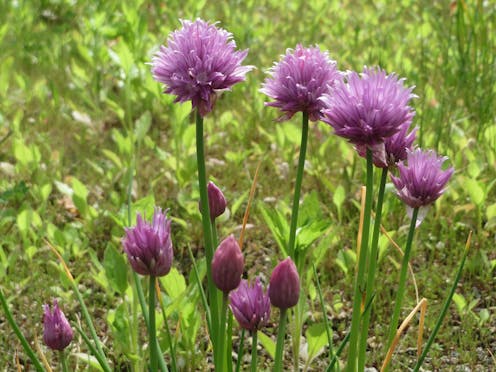Why do plants grow straight?
- Written by Beronda L. Montgomery, Professor of Biochemistry and Molecular Biology & Microbiology and Molecular Genetics, and Assistant Vice President of Research & Innovation, Michigan State University

Other plants, like ivy, grow as vines that climb up trees, walls and fences and use them for support. Climbing vines may grow straight, to the side or at angles, depending on what kinds of support structures they find to grow on. The purpose is to expose their leaves to as much sunlight as possible.
In my recent book, “Lessons from Plants[8],” I explore how plants are usually positioning themselves to see the light. It’s fascinating that we humans, too, are often positioning ourselves to see something interesting.
So the next time you see a plant growing straight, take notice of whether light is directly above it. Or if you see a plant that’s not straight, notice whether it’s bending toward light coming from the direction it’s facing. Or maybe it’s a vine climbing on a structure and using that support to take a different route toward the sun.
Hello, curious kids! Do you have a question you’d like an expert to answer? Ask an adult to send your question to CuriousKidsUS@theconversation.com[9]. Please tell us your name, age and the city where you live.
And since curiosity has no age limit – adults, let us know what you’re wondering, too. We won’t be able to answer every question, but we will do our best.
References
- ^ Curious Kids (theconversation.com)
- ^ curiouskidsus@theconversation.com (theconversation.com)
- ^ auxins (www.britannica.com)
- ^ Join the list today (memberservices.theconversation.com)
- ^ runners (kids.britannica.com)
- ^ Stuart Caie/Flickr (flic.kr)
- ^ CC BY (creativecommons.org)
- ^ Lessons from Plants (www.hup.harvard.edu)
- ^ CuriousKidsUS@theconversation.com (theconversation.com)
Authors: Beronda L. Montgomery, Professor of Biochemistry and Molecular Biology & Microbiology and Molecular Genetics, and Assistant Vice President of Research & Innovation, Michigan State University
Read more https://theconversation.com/why-do-plants-grow-straight-169337

